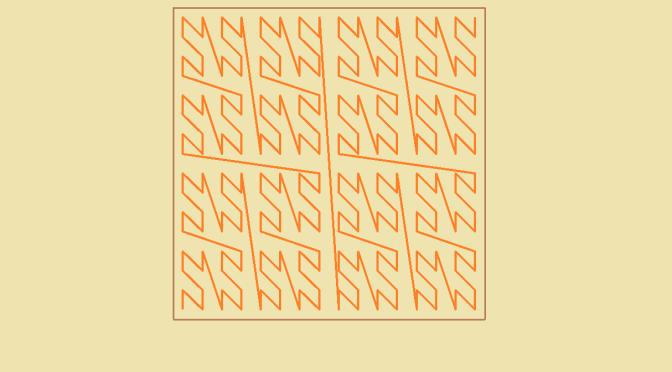Introduction
We aim at defining a continuous function \(\varphi : [0,1] \rightarrow [0,1]^2\). At first sight this looks quite strange.
Indeed, \(\varphi\) cannot be a bijection. If \(\varphi\) would be bijective, it would also be an homeomorphism as a continuous bijective function from a compact space to a Haussdorff space is an homeomorphism. But an homeomorphism preserves connectedness and \([0,1] \setminus \{1/2\}\) is not connected while \([0,1]^2 \setminus \{\varphi(1/2)\}\) is.
Nor can \(\varphi\) be piecewise continuously differentiable as the Lebesgue measure of \(\varphi([0,1])\) would be equal to \(0\).
\(\varphi\) is defined in two steps using the Cantor space \(K\).
Definition of \(\varphi\)
For \(x \in K\) there exists a unique sequence \((a_k) \in \{0,2\}^{\mathbb{N}^*}\) such that \(x=\sum_{k=1}^\infty a_k 3^{-k}\). We define \(\varphi(x)=(\sum_{k=1}^\infty b_{2k} 2^{-k},\sum_{k=1}^\infty b_{2k+1} 2^{-k})\) where \(b_k=a_k/2\) for all \(k \in \mathbb{N}^*\). One can verifies that \(\varphi\) is continuous on the Cantor set relying on the fact that if two points of the Cantor set are at a distance less than \(3^{-k}\) their ternary representations are equal for the first \(k\) digits.
In \(x \notin K\) then \(x\) belongs to a unique interval whose extreme points \(r,s\) are in \(K\). As \([0,1]^2\) is convex we can define \[\varphi(x)=\frac{x-r}{s-r} \varphi(s) + \frac{s-x}{s-r} \varphi(r)\] \(\varphi\) is continuous at \(x\). And finally, \(\varphi\) is continuous on \([0,1]\).
\(\varphi\) is onto as for \((r=\sum_{k=1}^\infty r_k 2^{-k}, s=\sum_{k=1}^\infty s_k 2^{-k}) \in [0,1]^2\) written with dyadic representations, we have \(\varphi(x)=(r,s)\) for \(x=\sum_{k=1}^\infty a_k 3^{-k}\) written with ternary representation and \(a_{2k}=2 r_k\), \(a_{2k+1}=2 s_k\) for all \(k \in \mathbb{N}^*\).
One can define curves that approximate \(\varphi\) as illustrated in above picture. This example of a curve filling a square is from Lebesgue.

